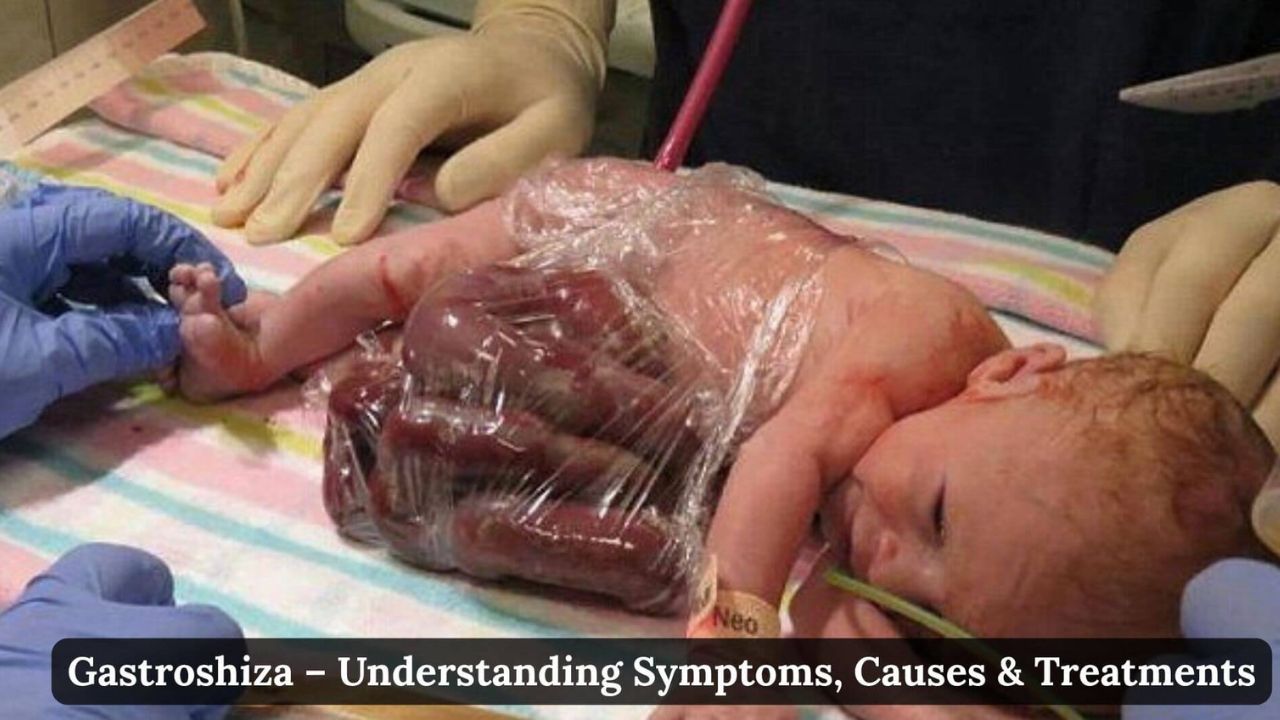Gastroshiza is a rare but significant birth defect that affects the abdominal wall of newborns. In this condition, the baby’s intestines push out through a small opening near the belly button without a protective membrane covering them. Because of this exposure, immediate medical attention is essential to prevent infection, dehydration, and other complications.
This article provides a detailed and updated look at gastroshiza, including its causes, diagnosis, treatment methods, and long-term outcomes.
What is Gastroshiza?
Gastroshiza is classified as a congenital anomaly, meaning it develops before birth. It occurs when the abdominal wall fails to close completely during early pregnancy, leaving a gap beside the umbilical cord. Through this gap, parts of the intestines, and occasionally other organs, remain outside the baby’s body.
Unlike similar conditions such as omphalocele, gastroshiza does not involve a protective sac around the organs. This difference makes the condition riskier because exposed tissue is in direct contact with amniotic fluid inside the womb.
Causes of Gastroshiza
Doctors and researchers are still studying the root causes of gastroshiza, but several factors have been linked to its development:
-
Maternal age – Younger mothers, especially those under 20, have a higher chance of giving birth to a baby with gastroshiza.
-
Environmental exposure – Alcohol, smoking, and certain medications during pregnancy may increase the risk.
-
Nutritional deficiencies – Low intake of folic acid and other vitamins can interfere with normal fetal development.
-
Genetic influence – While gastroshiza is not usually inherited, some genetic predispositions may play a role.
The condition is not caused by anything a parent does intentionally, but maintaining a healthy lifestyle during pregnancy can lower risks.
How is Gastroshiza Diagnosed?
Prenatal Screening
Modern prenatal care allows gastroshiza to be identified before birth. Ultrasound imaging is the most common tool used to detect the condition, usually during the second trimester. The exposed intestines can often be clearly seen on the scan.
Additional Tests
-
Blood tests measuring alpha-fetoprotein (AFP) levels may suggest an abdominal wall defect.
-
Detailed ultrasounds help assess whether other organs, such as the stomach or liver, are involved.
Early diagnosis gives doctors time to plan delivery in a specialized hospital with neonatal surgery facilities.
Symptoms at Birth
When a baby is born with gastroshiza, the intestines are visibly outside the abdomen through a small hole near the umbilical cord. Because the organs are unprotected, babies may face:
-
Swelling and inflammation of the intestines
-
Feeding difficulties
-
Risk of infection
-
Fluid imbalance
These symptoms make immediate intervention critical.
Treatment of Gastroshiza
Treatment begins immediately after birth to stabilize the infant and protect exposed organs.
Initial Care
-
The exposed intestines are wrapped in a sterile covering to reduce fluid loss.
-
Antibiotics are administered to prevent infection.
-
The baby is supported with IV fluids and monitored in the neonatal intensive care unit (NICU).
Surgical Repair
There are two main surgical approaches:
-
Primary repair – If the intestines can safely fit inside the abdomen, surgeons close the opening in a single operation.
-
Staged repair – If swelling prevents immediate closure, the intestines are placed in a temporary pouch called a “silo.” Over several days, they are gradually returned inside before final closure surgery.
Recovery and Prognosis
After surgery, recovery can take time, as the intestines may need to adjust before functioning normally. Common challenges include:
-
Slow digestion and nutrient absorption
-
Extended hospital stay for feeding support
-
Possible intestinal infections
Despite these challenges, survival rates for gastroshiza are very high with modern medical care. Most children go on to live healthy lives with minimal long-term complications.
Can Gastroshiza Be Prevented?
There is no guaranteed way to prevent gastroshiza, but certain steps may help reduce risk:
-
Taking folic acid and prenatal vitamins before and during pregnancy
-
Avoiding smoking, alcohol, and recreational drugs
-
Attending regular prenatal checkups
-
Following medical guidance on safe medications
These steps not only lower the risk of gastroshiza but also support overall fetal health.
Support for Families
Parents of babies diagnosed with gastroshiza often face emotional stress. Support groups, counseling, and guidance from healthcare teams can provide comfort and help families prepare for treatment and recovery. Online communities also allow families to connect and share their experiences.
Conclusion
Gastroshiza is a serious but treatable condition that requires early detection and expert medical care. With advances in prenatal screening, neonatal surgery, and intensive care, outcomes for babies born with gastroshiza have improved significantly.
While the exact cause remains uncertain, awareness and preventive health measures can make a difference. With proper treatment and support, children with gastroshiza can recover well and enjoy full, active lives.

